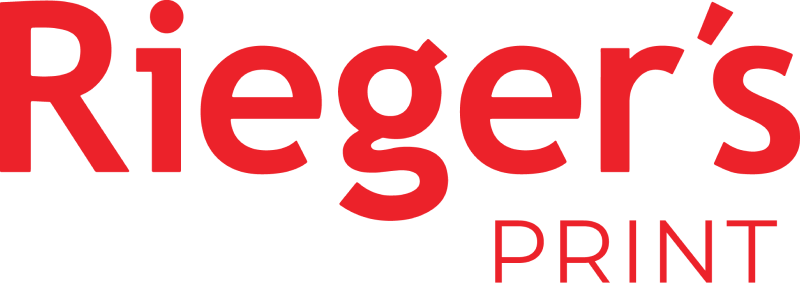Printing mistakes can be time consuming and cost you money you’d rather not have to spend. Whether that be a spelling mistake that could have been avoided, setting your file up the wrong size or finding out after the fact that your image file wasn’t the best resolution, we’re here to help.
Below are the top 5 mistakes we come across and a little advice to help you avoid them.
1. Ignoring File Setup
One of the most common issues we come across is receiving a file that isn’t set for size. We can’t make a square image into a DLE flyer so make sure you know what dimensions your page needs to be before setting up your design. It’s also super important to include crops and bleeds for a design that you want to print full bleed.
How to avoid it:
- Ensure your design is set up to the correct size – to read about the most common paper sizes used in printing and get the dimensions for these you can read our post The most common paper sizes used for printing
- Make sure you have included crops and bleeds on your design – for further instruction and explanation of this, you can read our post What are crops and bleeds?
- Don’t have text or images too close to the edge of the page so they don’t get cut off.
- Convert your files to a PDF and make sure you choose the highest quality option.
By having your files set up correctly before you send them to print it will save you unnecessary time and frustration trying to fix it later.
2. Resolution issues
Have you ever had an image that looks great on the screen but prints out looking pixelated and rubbish? This is a common issue that we come across.

How to avoid it:
- Make sure your images are the best quality you can get – a 10kb logo which may look ok on the screen probably won’t print very well.
- Don’t take images from the web. Firstly because they’re probably under copyright but secondly, most web images have been saved and uploaded for web and won’t print well at all.
- Always check that your design is at the correct resolution (at least 300 dpi) for print.
- Make sure you have ‘High Quality Print’ set when converting files to PDF. Often the default setting will be standard which will probably make the text look crisp but you’ll lose the original quality of any images or logos.
If in doubt, create the PDF to size and zoom in at 100% to see how it looks. If it looks pixelated on the screen, it’ll be pixelated when you go to print it so it’s time to find a new image for your design. If you get stuck, here is a handy resource you can use to find the perfect image for your project Where to find free stock images for your designs.
3. Not Proofing Before Printing
Skipping the proofing stage of your design and not reading through the text thoroughly can be a recipe for disaster. No one wants to have to reprint their job because they forgot to check the phone number on their business card was correct! While it’s not always possible to see a physical proof, making sure you proof it from a PDF version of your design can certainly help!
How to avoid it:
- If you can, check a proof before running a job in bulk. If this isn’t possible, we do always check a proof ourselves before starting a print run so if you have any concerns, voice it before we start printing, not after.
- Review the details of your file – spelling, resolution of images, colours etc.
- If you have an office printer, check a copy before sending it to us. Often you won’t pick something up on a screen that you will pick up on paper.
- If you’ve included a QR code be sure to scan it to double-check it works as intended!
By taking the time to thoroughly check and double-check your document or design beforehand you can be confident that you’re not going to come across a pesky little mistake and avoid a costly reprint.
4. Not setting up the correct colours
The thing about colours is that what you see on the screen is sometimes quite different to what will print depending on the colour profile you set it up for.
How to avoid it:
- Always use CMYK (Cyan, Magenta, Yellow, Black) colours when designing for print, not RGB (Red, Green, Blue). RGB is designed for digital screens whereas most colour laser printers are made up of CMYK toner/inks.
- If colour consistency is critical then you will need to see a proof before printing.
- Different papers can also affect how colours print, so again, check a proof if the right shade of colour is super important. Glossy paper will typically brighten a colour whereas a matt stock may dull it down a bit.
- Know your brands Pantone/Hex colour/s to keep colour consistency across your designs.
5. Not Ordering Enough (or Too Much)
The more you print, the cheaper the unit cost is for your printing. In other words, it’s going to be cheaper to order 500 copies of your flyer than do 200 and then another 200 when you run out followed by another 100 two days later. By the same token, you don’t want to print more than you need so it’s good to put some thought into it. We’re happy to quote for a couple of different quantities too so don’t be afraid to ask for a quote so you can compare.
How to avoid it:
- Consider how long your printed material will be used for – if the same flyer is going to be used throughout the year than it might pay to do loads and store them in a box at your office. If it’s going to change often or has dates attached then you’ll only really want to print the number you think you’ll use.
- We’re happy to discuss the scope of your project and help you determine the best and most cost efficient print run for your particular job.
In conclusion:
By following these tips and setting your file up correctly for print, the end result will be a perfect print job you can be proud to use to represent your brand or business.

